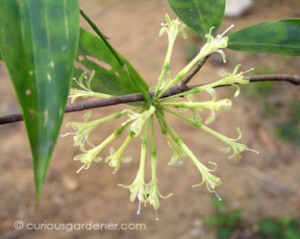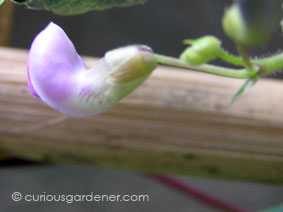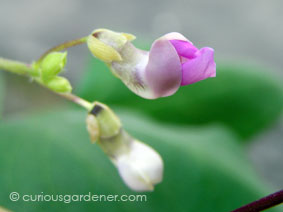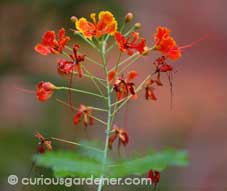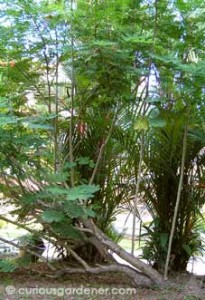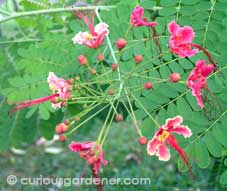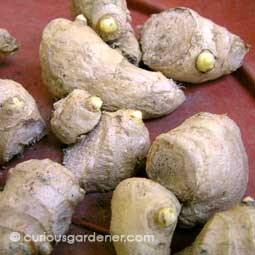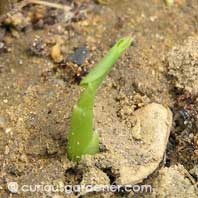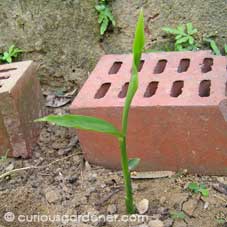
Naughty grasshopper that decided to snack on my bean leaves. It's not welcome any more, but it was interesting seeing it after not seeing any for many years. Or perhaps we just didn't grow anything it fancied until now...
Here we are in early March, and the weather is still horribly dry and hot. The grass crackles as you walk over it, and many of my poor plants are pleading for more hydration with drooping, wrinkly leaves. Worse, my snap beans keep flowering but aborting, so I haven’t had the pleasure of seeing any of those pretty pink flowers bloom as yet.
But, there is a lining to the cloud. Better yet, there are more clouds in the skies — but they have yet to do more than drift tantalizingly by. I’ve noticed the temperature dropping a little, so I hope this means rain will follow soon.
The dry weather is a further torture as I have in my hands various packets of vegetable seeds, but am cautious of sowing until I’m sure they have a decent chance of growing.
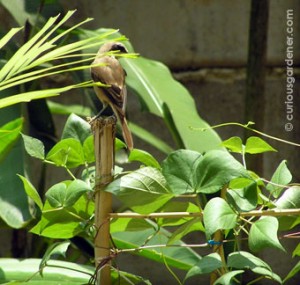
Brown shrike on the lookout for prey from its perch on my bean trellis. It's a fairly regular visitor.
One reason I don’t mind the delay is because I’m using the time to learn more about the concept of permaculture (permanent + agriculture). It’s about planning your garden to be a series of systems that are based on nature. In this way, it’s more self-sufficient (since in nature, everything happens naturally with no interference from us) and more environmentally friendly.
Go green, I say.
There are many online resources available, but the most friendly one I’ve found so far is at Tropical Permaculture, an Aussie-based site. It’s informative and not too technical (a plus for this blur sotong), and I’ve found it encouraging enough to decide to take the plunge to order a book, The Permaculture Home Garden, to learn even more. It’s a worthwhile investment, I think, and if it helps the environment more, good.
On a happy note, my sweet potato has sprouted. My friend’s loss of an old sweet potato was my garden’s gain, and I’ll be anxiously awaiting the shoots to grow so I can use them to grow more plants. One problem with sprouting from a tuber is that pests are attracted to the sweet potato. My first attempt 3 months ago was thwarted by my dogs (or maybe a rodent?), because it was dug up and eaten in a matter of days. This time around, I’ve put barriers around, but ants have discovered the potato below ground. Growing edible plants is certainly a challenge!
So it’s with fingers crossed that I prepare the future sweet potato bed and hope the shoots can grow undisturbed to be replanted later. And, I hope those passing clouds do more than just pass by, because the plants sure could do with some “showers of blessings”!
© 2010 curiousgardener.com All rights reserved.


